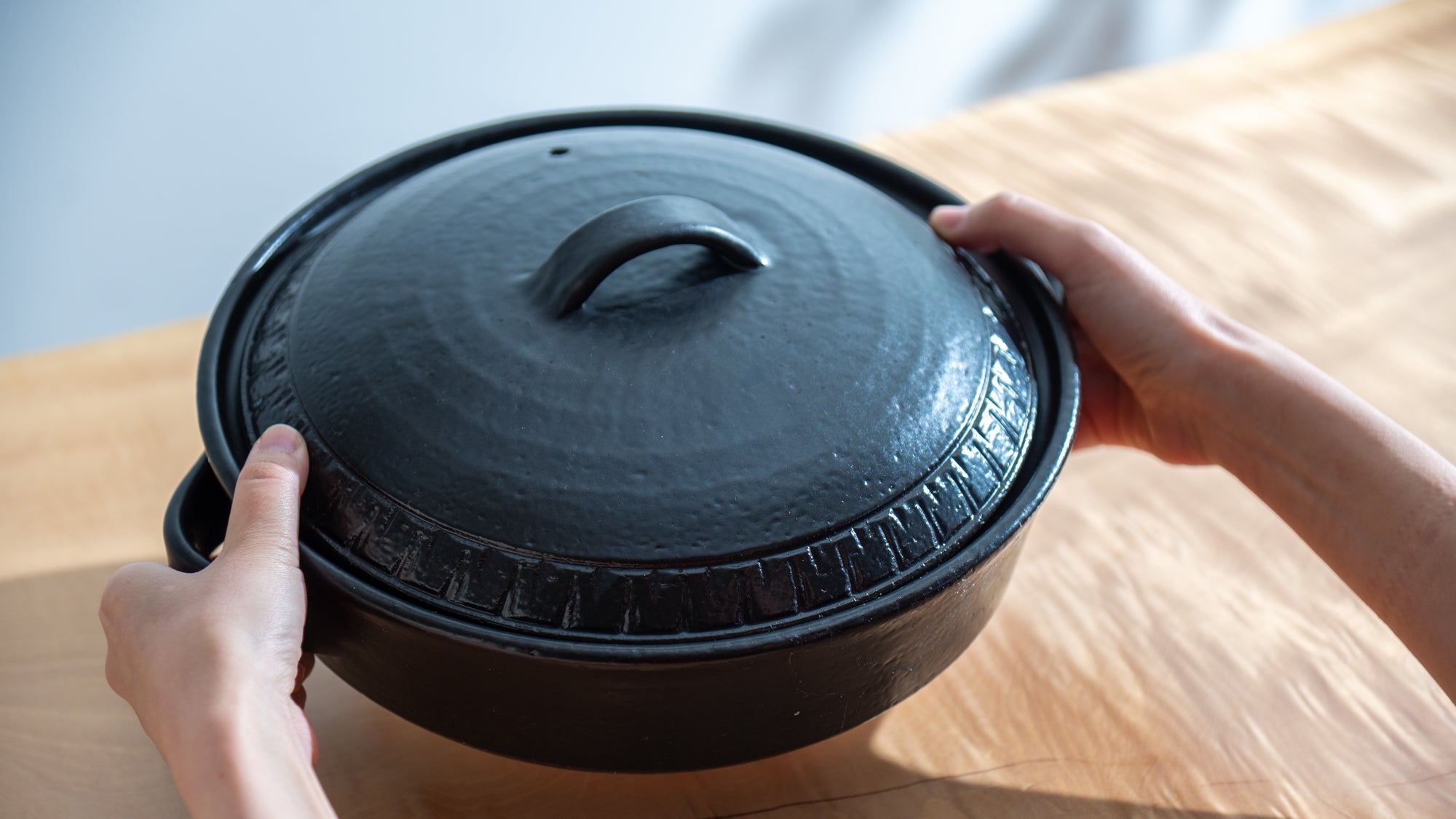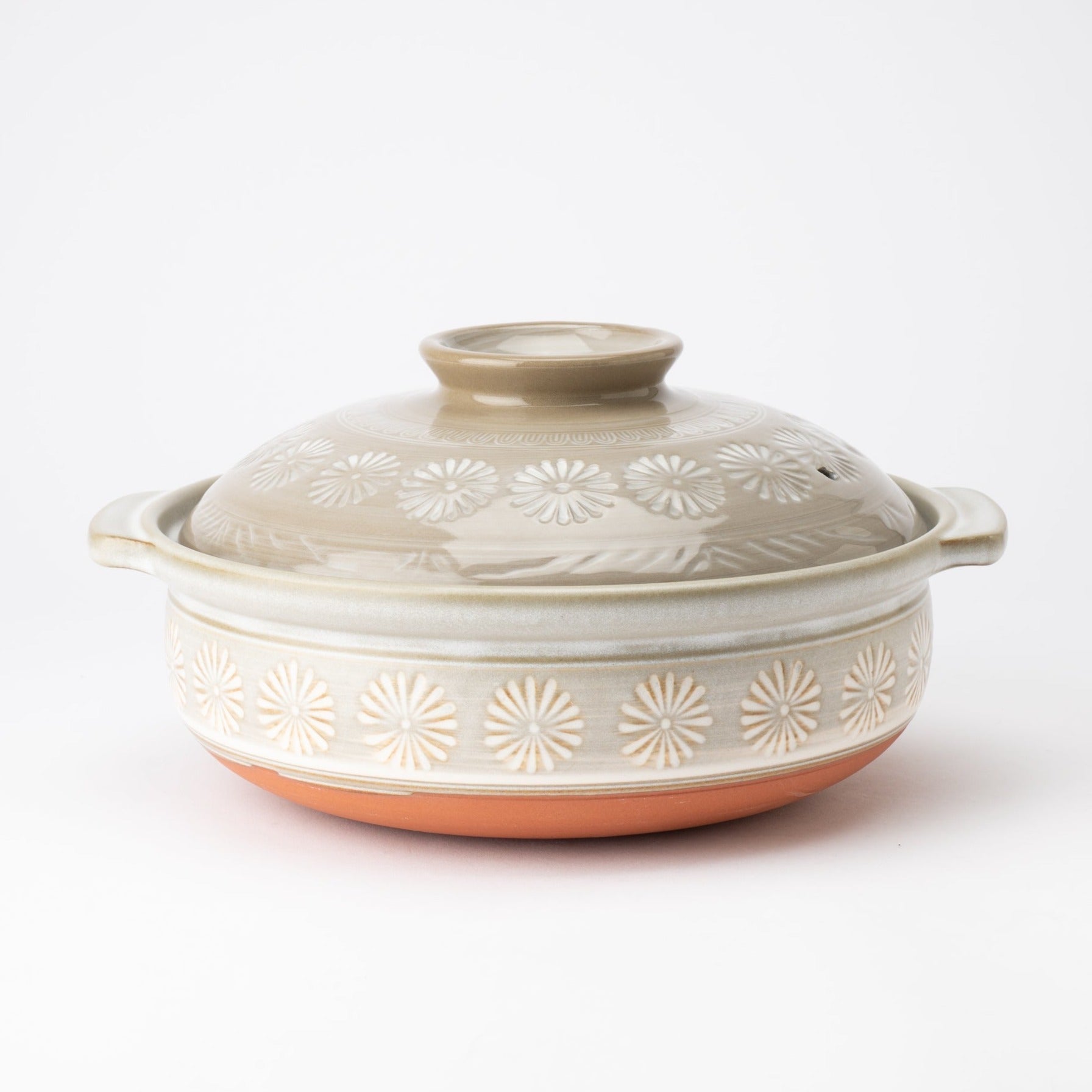
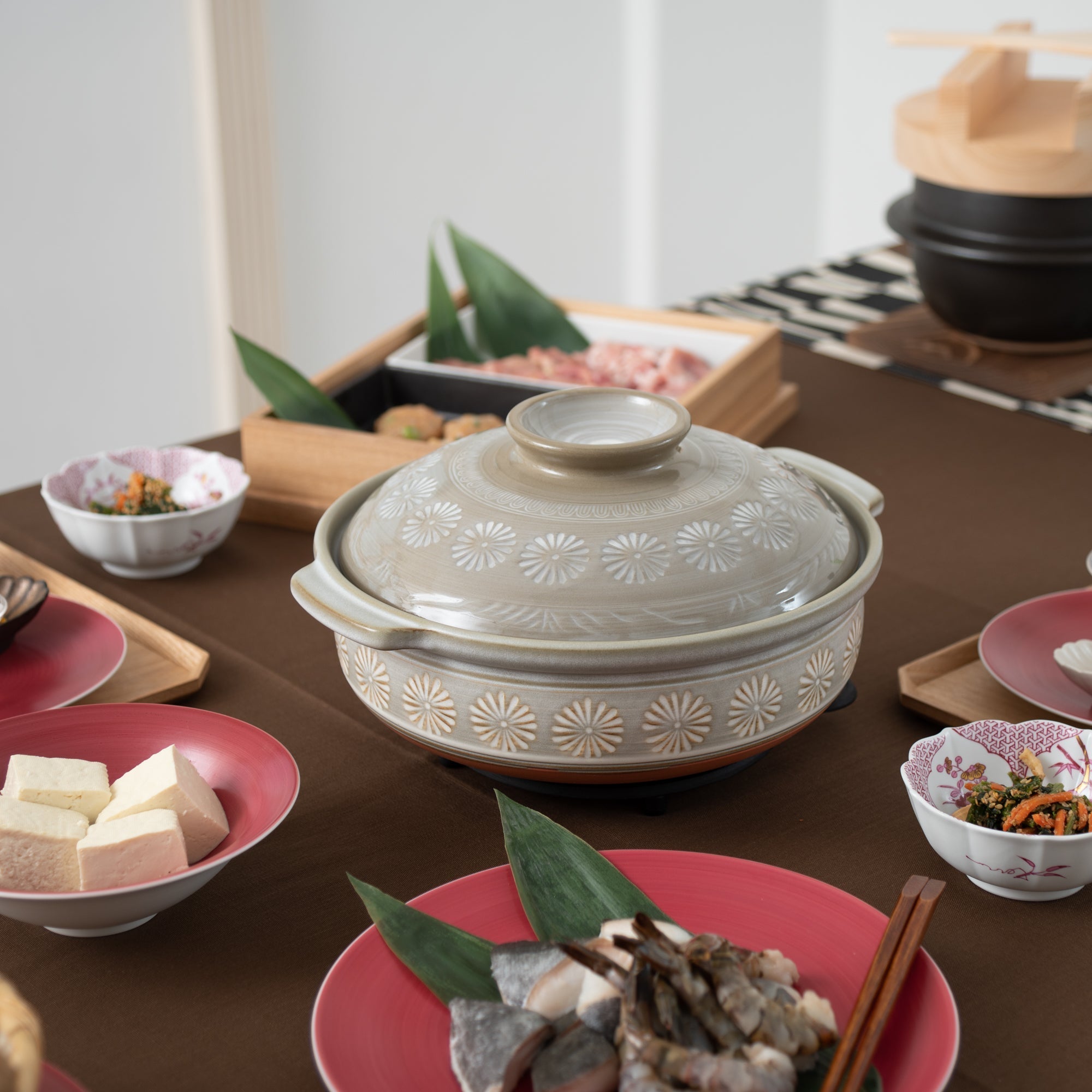
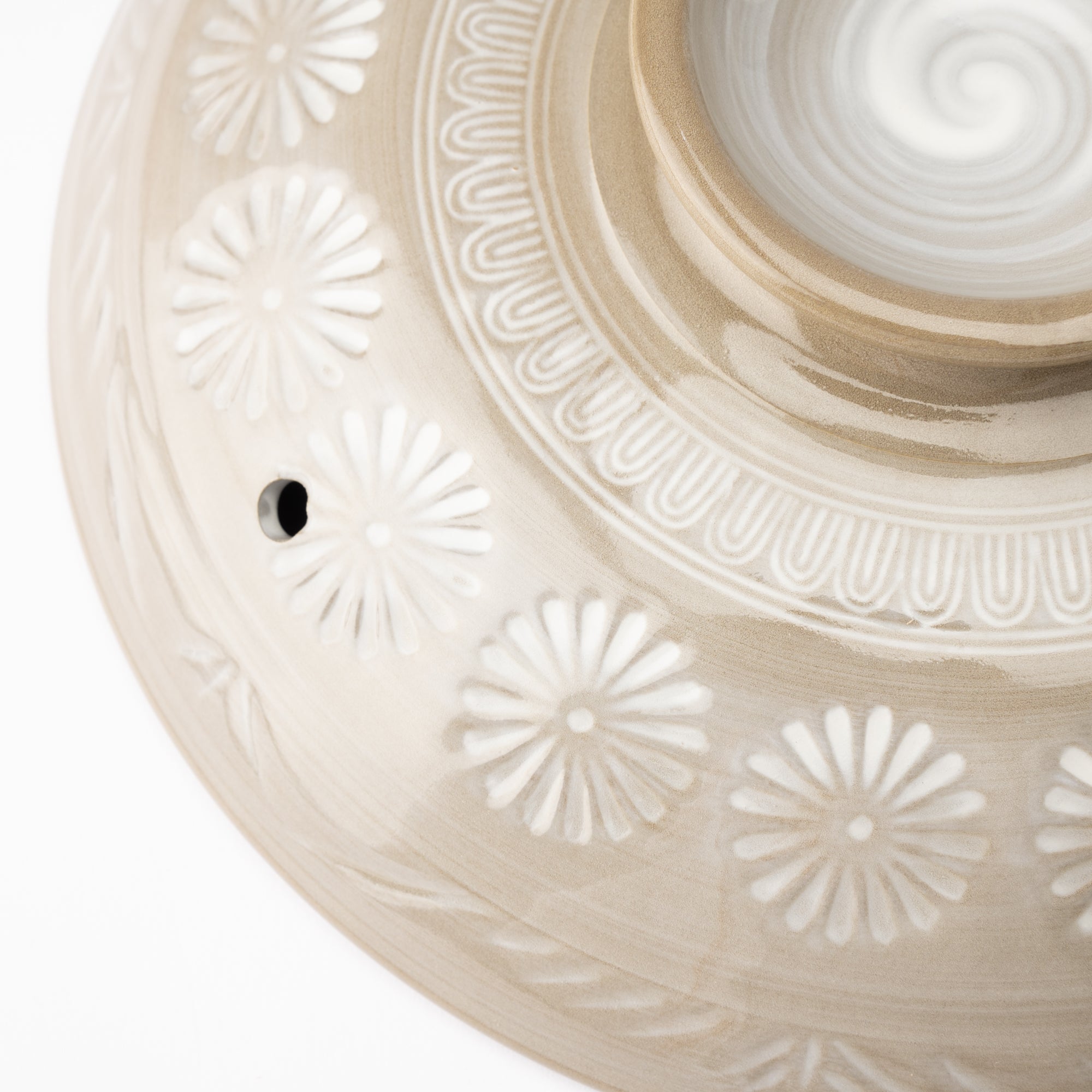
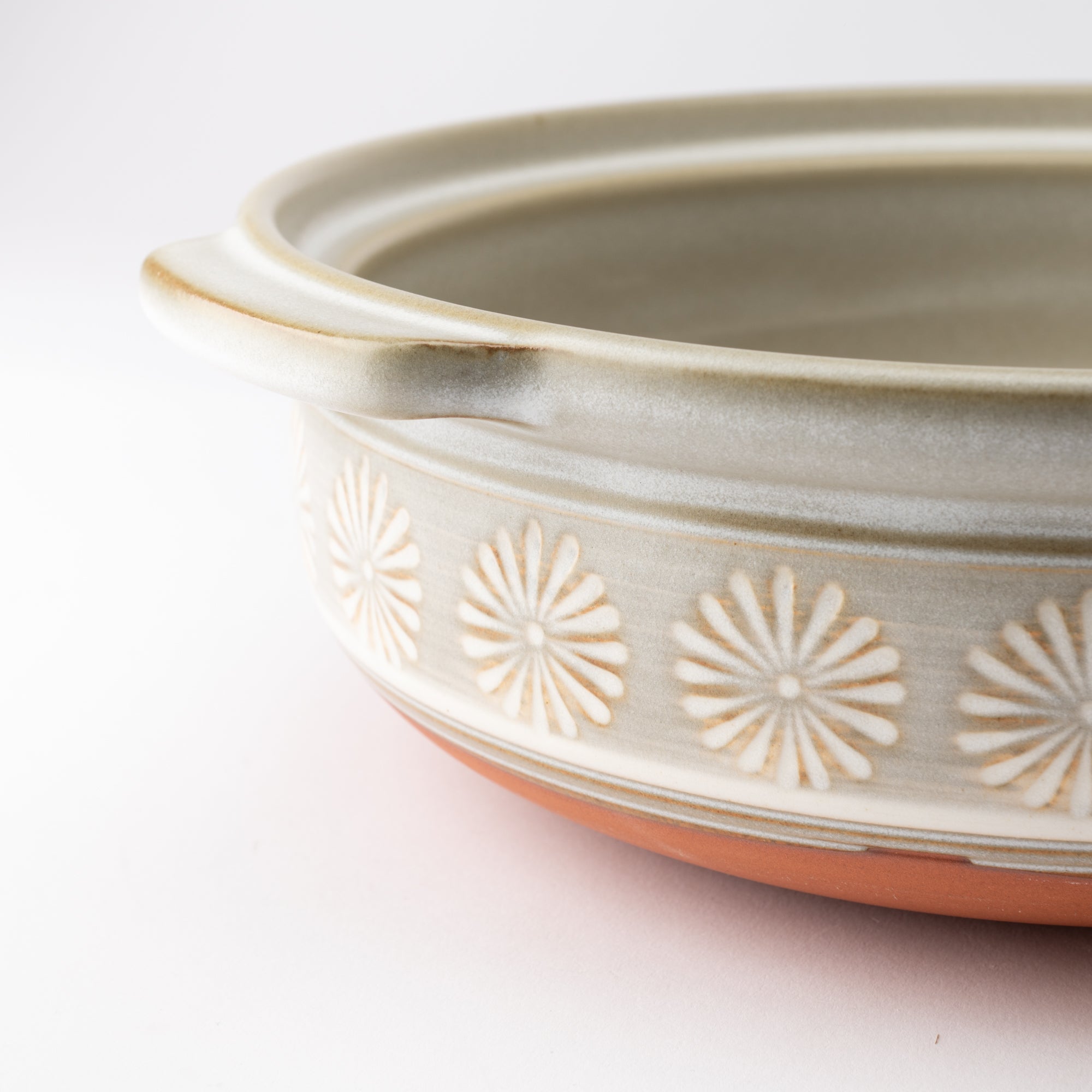
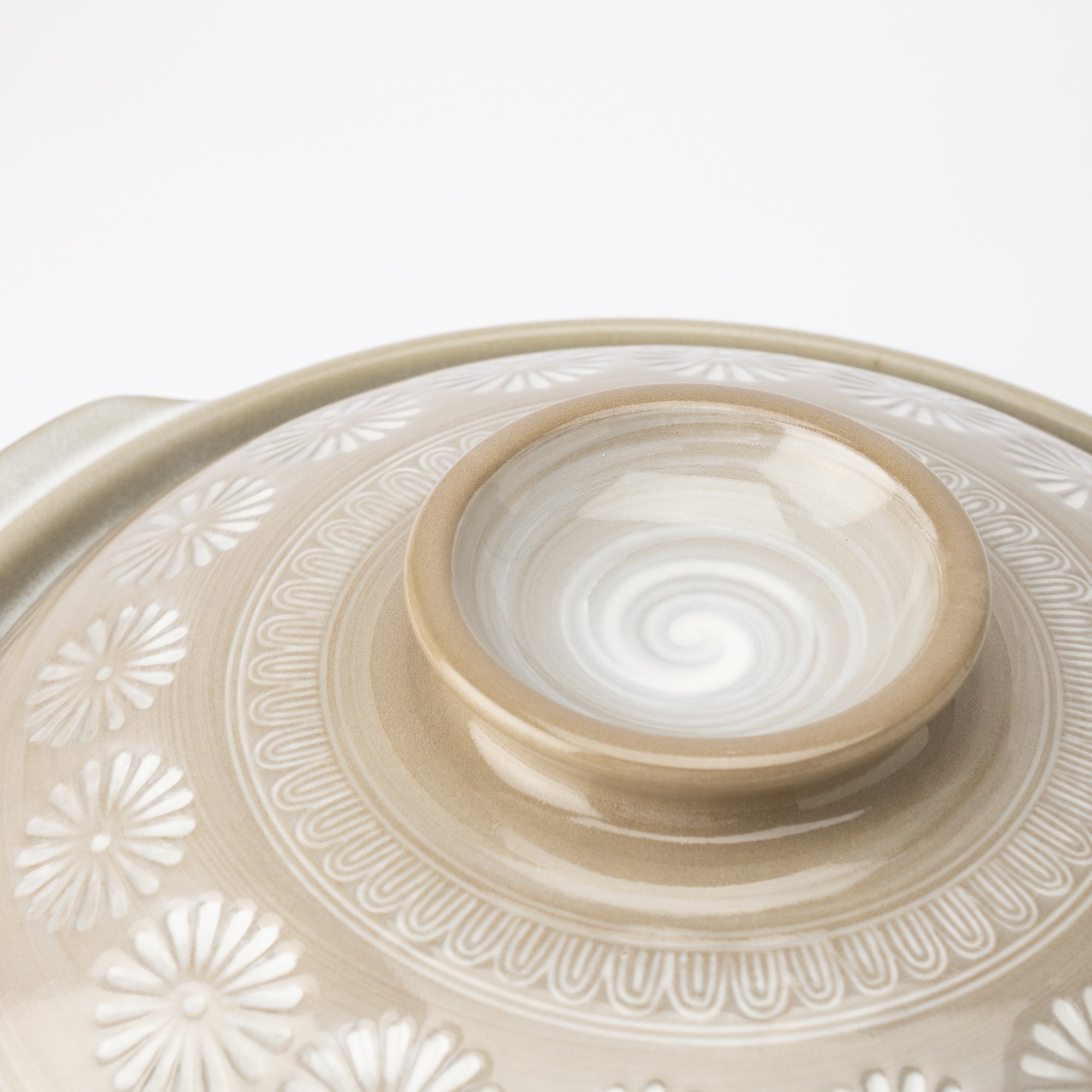
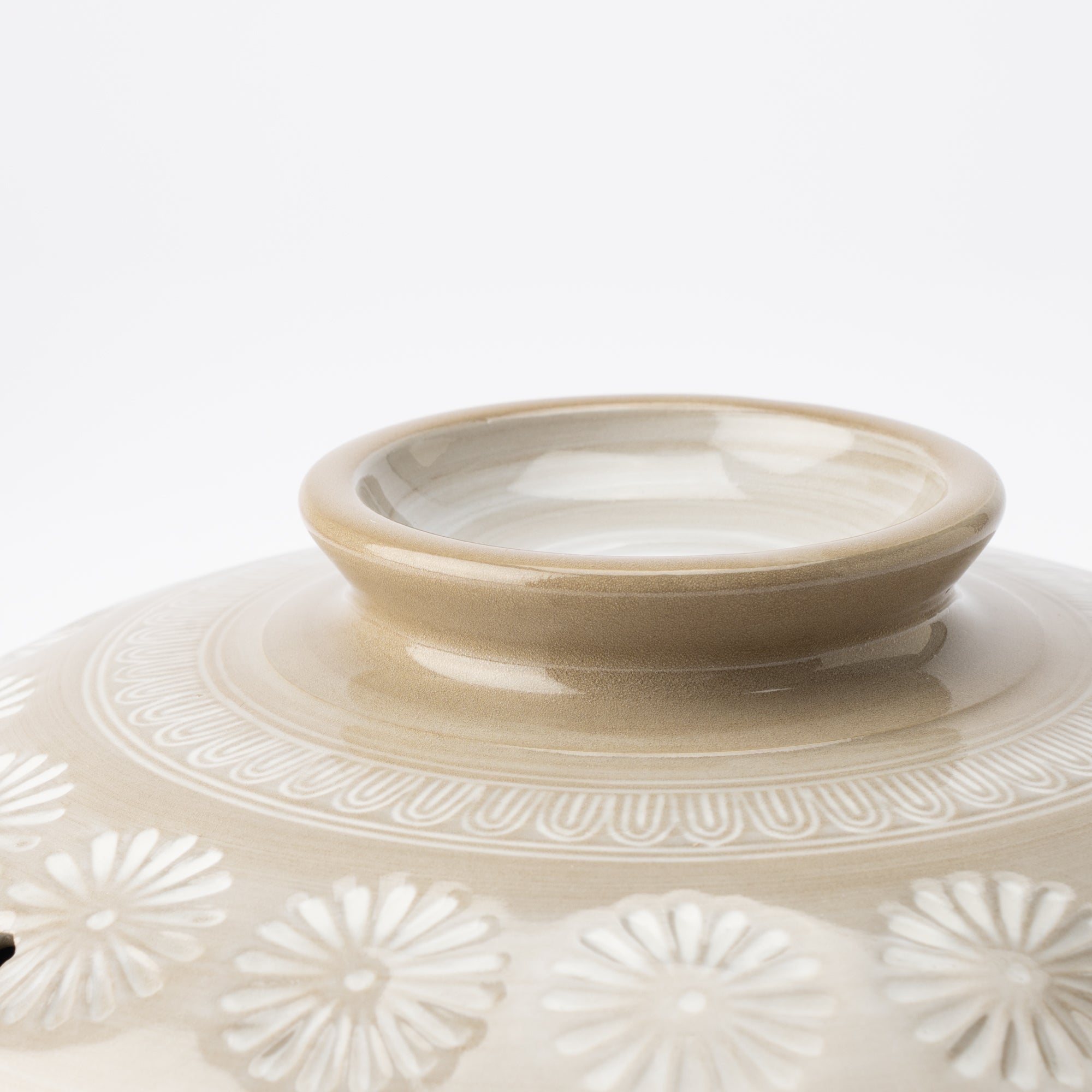

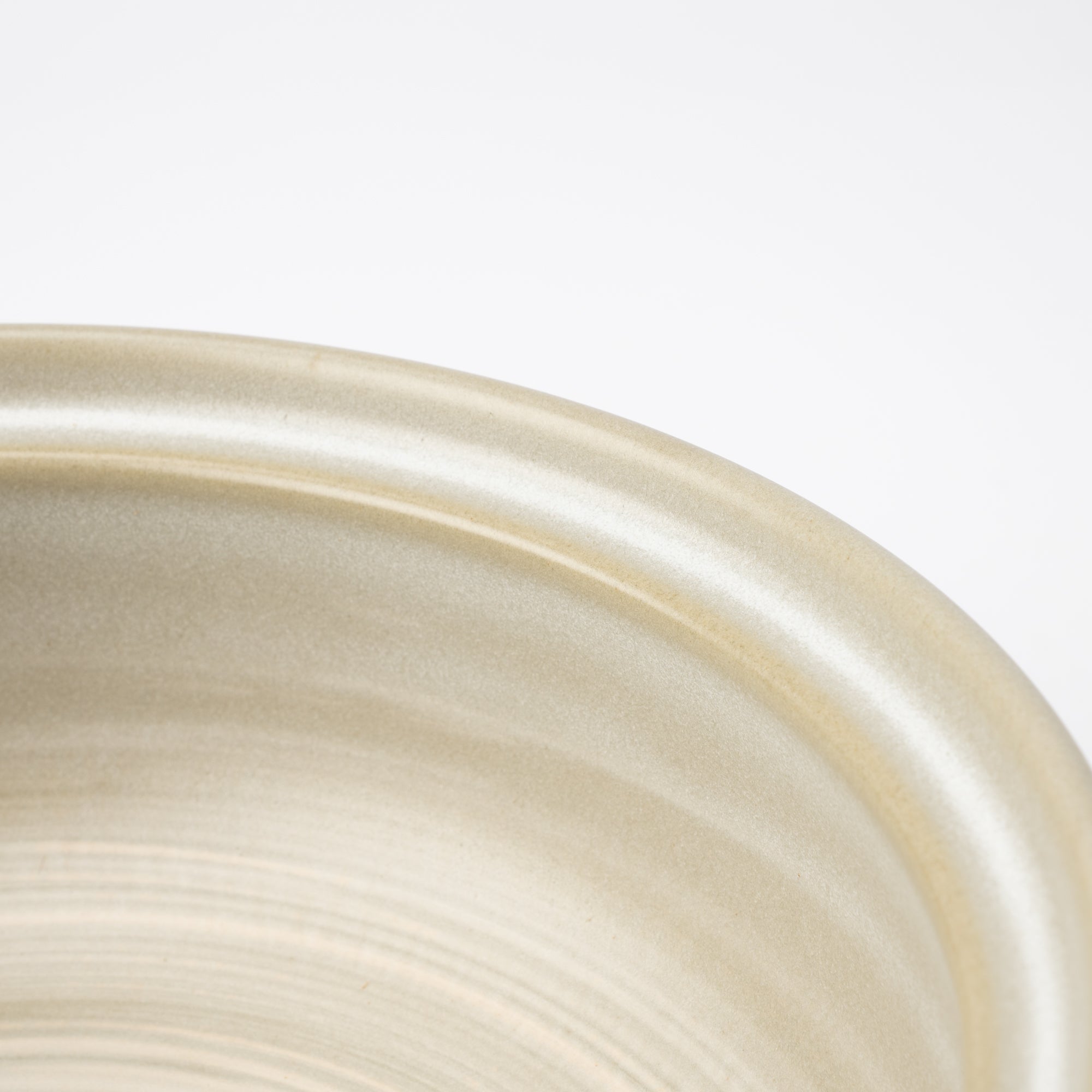

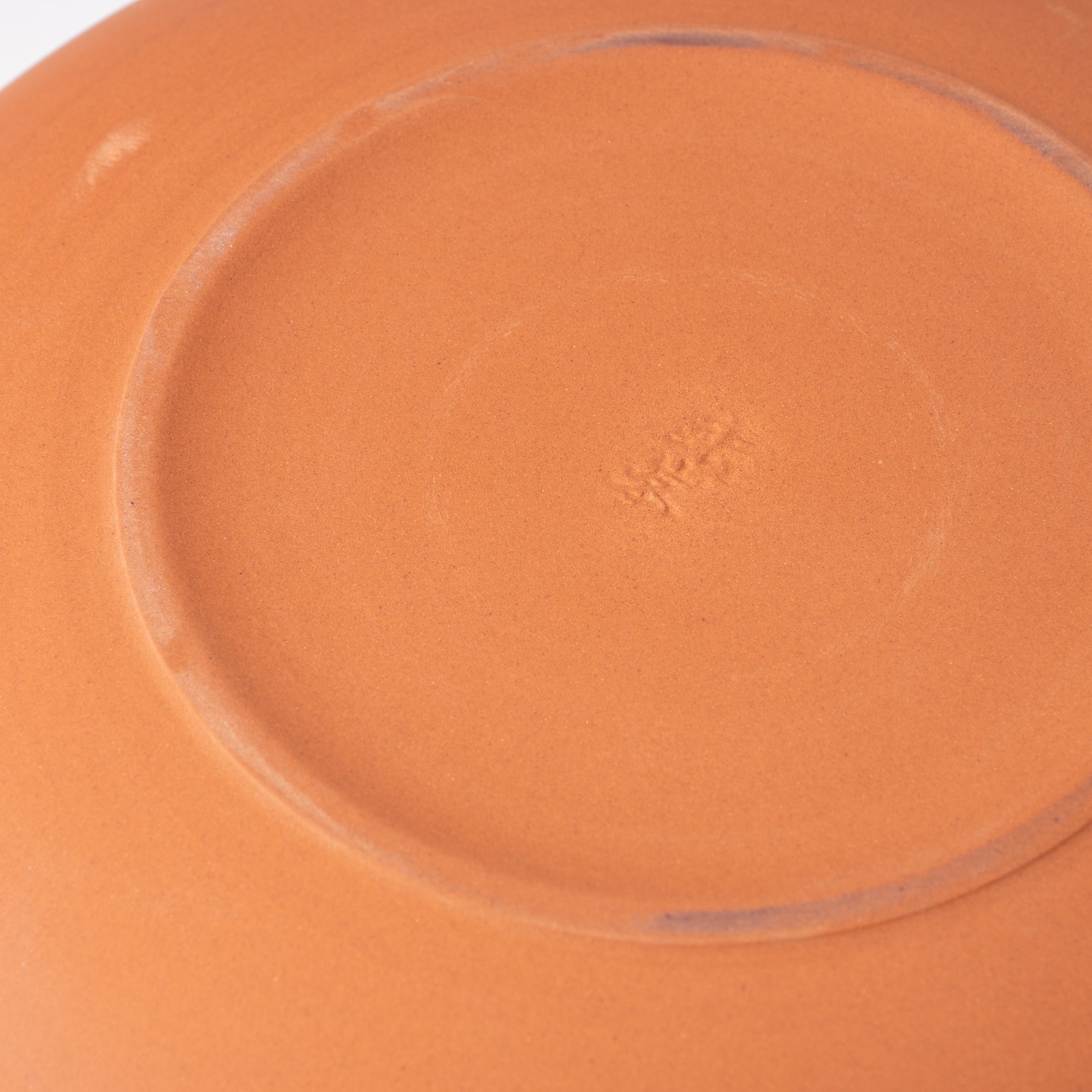
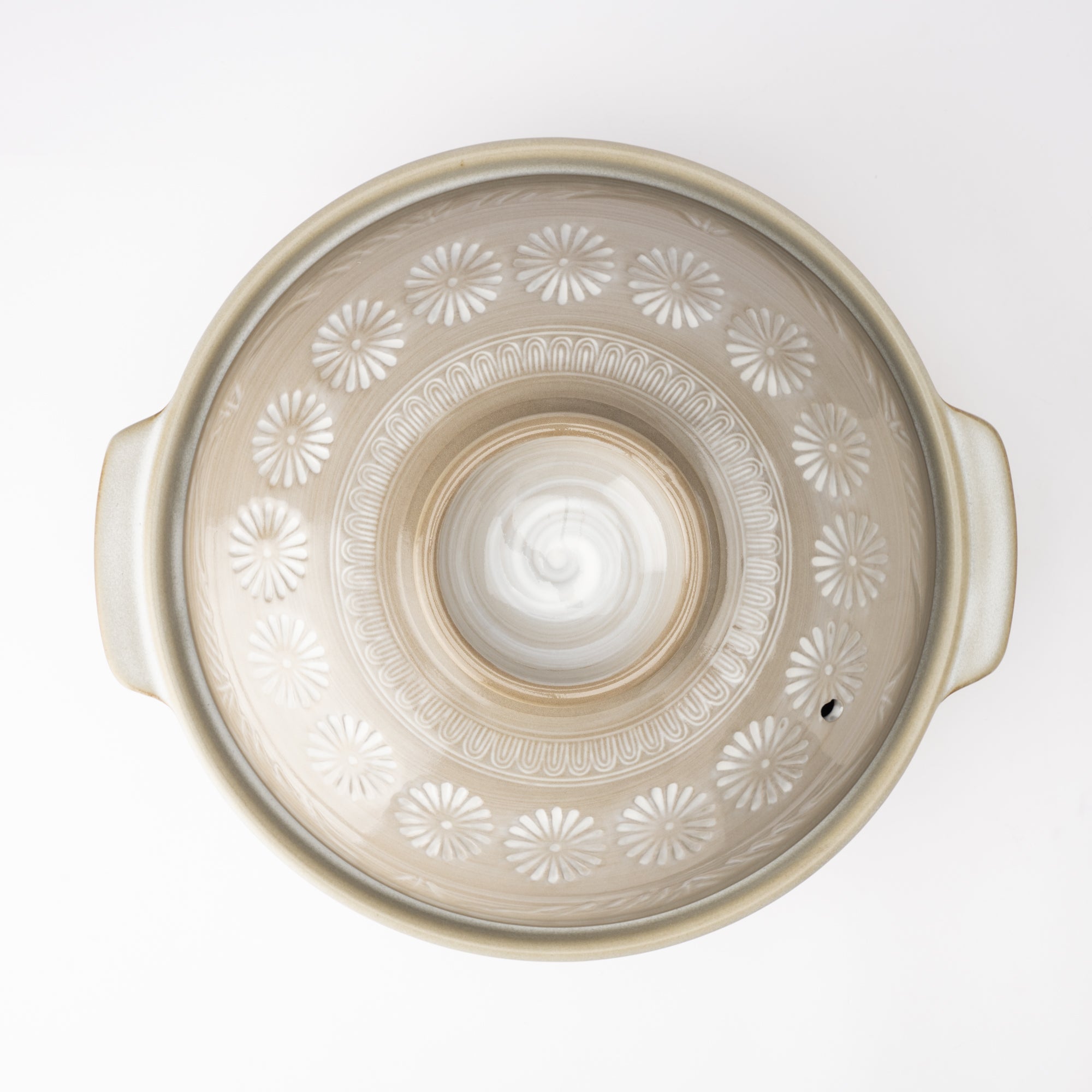
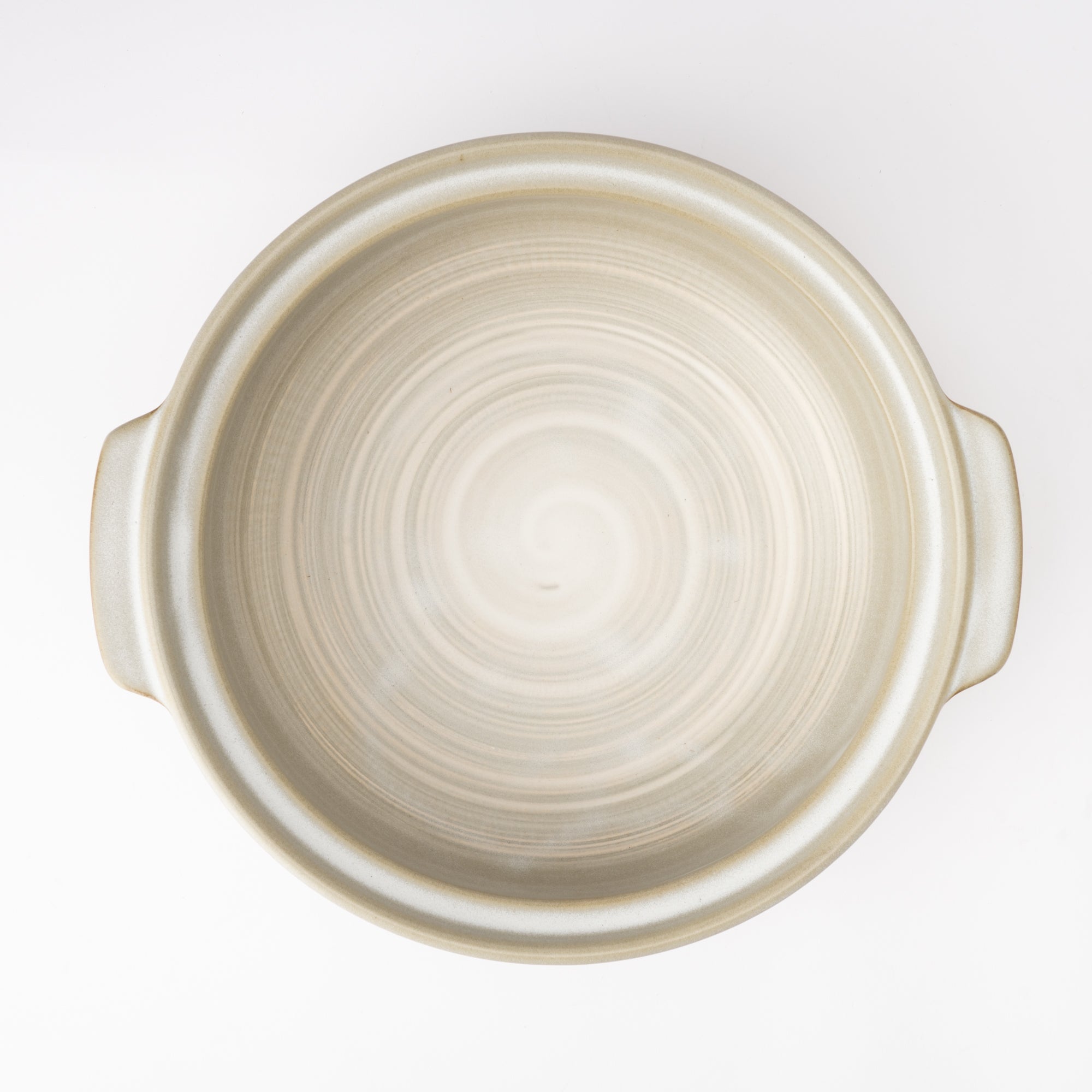
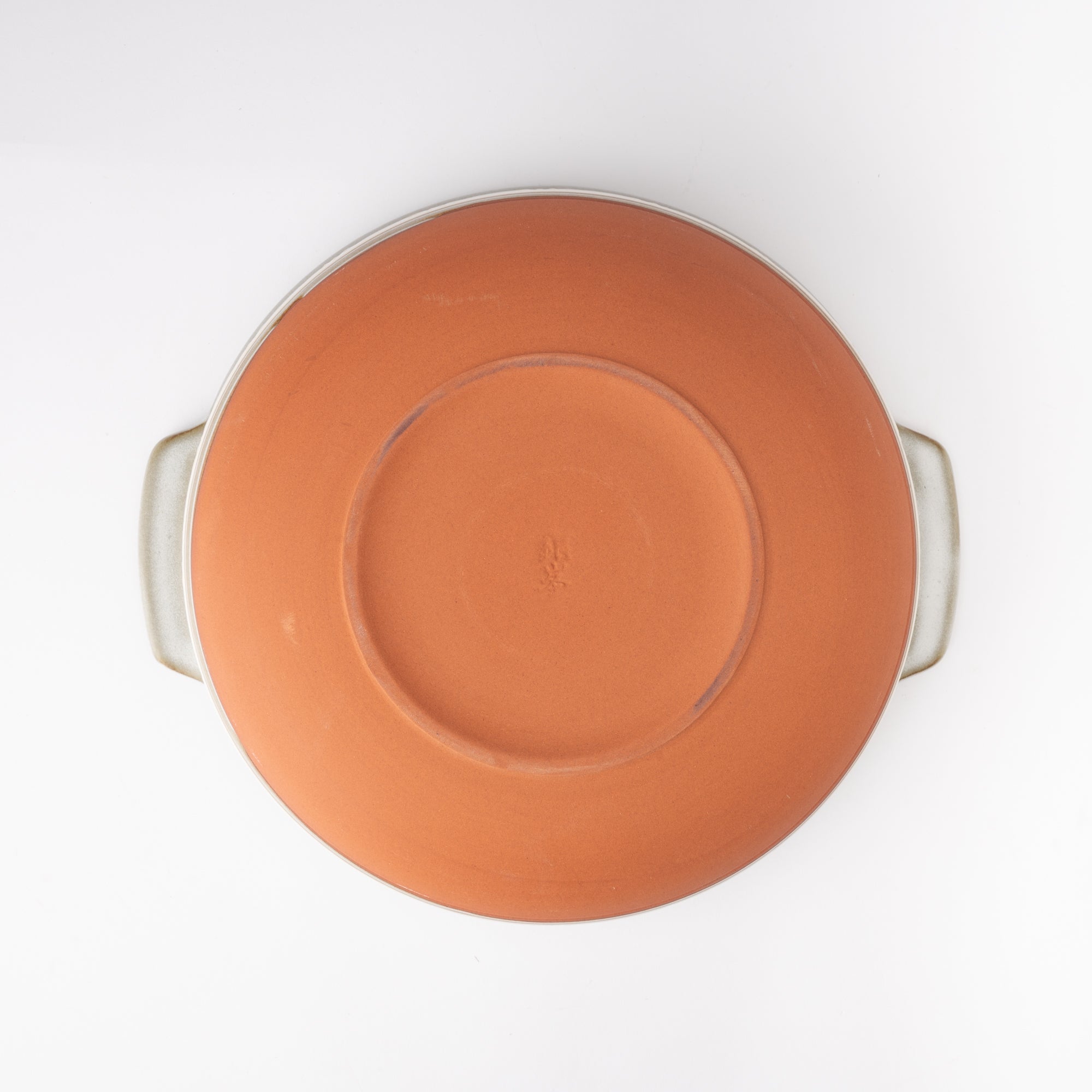
Mishima Donabe Japanese Clay Pot for 3 to 4 persons
Estimated Shipping Widget will be displayed here!
The Hana Mishima (Ginpo Mishima) series, with its large floral pattern in a soothing gradation of white and gray, has been a long seller of the company since the 1970s. It was first used by professional chefs and continues to be widely loved both in Japan and abroad. Even after more than 20 years of use in restaurants and ryotei (traditional Japanese restaurants), the pots continue to be functional and durable.
All painting is done by hand. The painter himself makes the brushes by hand, and uses the one that feels best in his hand. It is a masterpiece that people have continued to choose for about half a century.
You can enjoy not only hot pot dishes, but also soup curry, cheese fondue, and many other dishes.
With a little shallow shape, the size of 3.2L(108.2oz) is suitable for 3 to 4 persons to enjoy Donabe dishes. For other dishes such as soup, stew, curry, cheese fondue, it can cook up to 4 to 5 people.
DETAILS
| Quantity | 1 |
| Size | D 31.5 cm (12.4 in) x H 16 cm (6.3 in) / For 4 people |
| Capacity | 3,200 ml (108.2 fl oz) |
| Material | Stoneware (Non-induction cookware) |
| Microwave | Yes |
| Dishwasher | No |
Maker / Brand
Founded by Ginpo Toki in 1932, GINPO is a distinguished brand rooted in the legacy of Banko ware, carried on through four generations in Yokkaichi, Mie Prefecture. Even with limited access to local materials, the company has continued to evolve—combining traditional craftsmanship with constant innovation to meet the changing needs of everyday life.
Its signature series—Kikka, Hana Mishima, and Sumi-Kannyu—embody both elegance and practicality. Through a meticulous five-stage production process that blends artisanal skill with modern technology, GINPO remains committed to delivering consistent, high-quality donabe from raw clay to finished form.
Crafts
From everyday tableware and flower vases, Yokkaichi Banko ware, commonly referred to as Banko ware, is known for its remarkable variety. Among its most iconic creations is the donabe, or Japanese clay pot. Beloved for its durability and heat retention, it has become a staple of home-cooked meals—and today, around 80 percent of all donabe produced in Japan are Banko ware.
Banko ware originated in the mid-Edo period (1603–1868 CE), when a cultured tea enthusiast named Nunami Rozan began crafting ceramics in present-day Kuwana, Mie Prefecture. Rather than naming the ware after its region, he chose the word “banko”—meaning “eternity”—as a wish for his creations to endure for generations. That enduring spirit lives on today, and in recognition of its cultural and historical value, Banko ware was designated a Traditional Craft by Japan’s Ministry of Economy, Trade and Industry in 1979.
Notes
Choose options













Estimated Shipping Widget will be displayed here!
Donabe Clay Pots
Japanese clay pots, known as donabe, are often used in restaurants and homes to serve authentic hot pot dishes like chanko nabe, yudofu, and oden. These winter favorites are especially flavorful when prepared in a traditional donabe.
Experienced chefs and science agree: cooking with a donabe makes food more delicious. Research shows that compared to a metal pot, cooking with a donabe can produce as much as 30% more glutamic acid, a key component of umami.
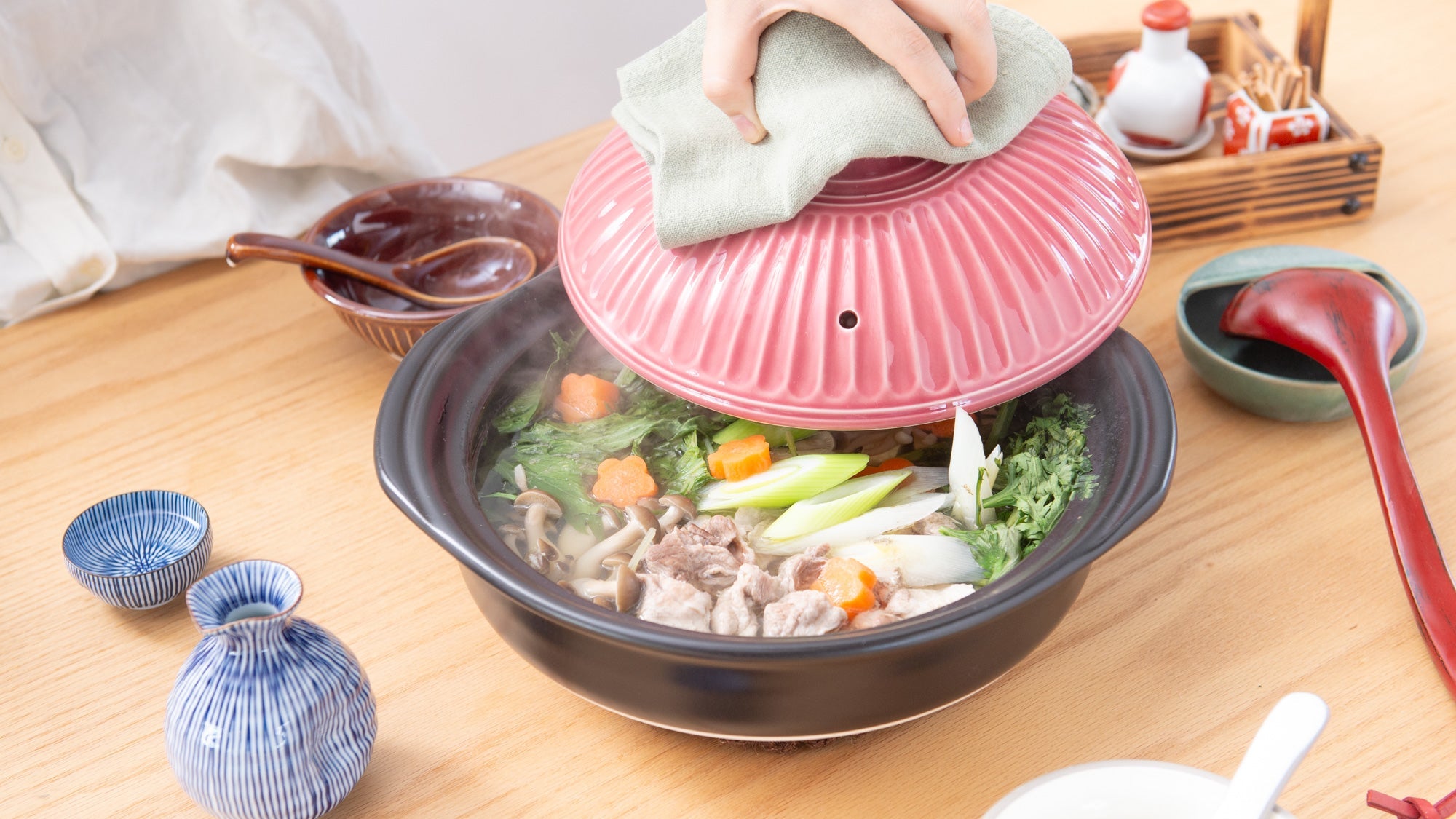
How to Care for Your Donabe Clay Pot
